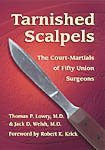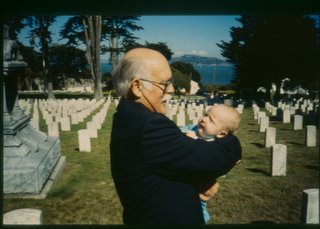
How unusual, these days, that an author or team of authors find a vein to mine that is so rich and undisturbed, the resulting scholarship can be considered to have broken new ground in the super-saturated world of Civil War historiography. That's just what Dr. Thomas Lowry and his wife Beverly, and Jack Welsh on one title, have done with the court-martial records in the National Archives. Maybe no one thought anything interesting could be found in the accounts of military legal proceedings. Maybe Jack Nicholson was speaking to timid researchers when he bellowed, "You Can't Handle the Truth!" And maybe some authors found the chaotic disorganization of the courts-martial documentation too daunting to delve into.

But thank goodness the Lowrys gave it a stab. Handwritten documents for roughly 80,000 Union court-martials (on paper of varying color and size, depending on what was available at the time) reside in a series of numbered manila folders comprising Record Group 153. They are, Dr. Lowry explains, in no particular order other than "vaguely chronological." One folder might contain a single court-martial, or dozens. Pages for a given court-martial were collected together with a ribbon, or paste, or a metal clip, now disintegrating into rust. Lowry notes that some of the unnumbered, gathered pages have been "disassembled, producing a 'paper salad,' with pages out of order." The only guide is an 1885 name index, but to Thomas and Beverly's everlasting credit, they are creating a useable subject index. Sadly, most Confederate transcripts of court-martial proceedings were burned up in the conflagration in Richmond at the close of the war. Two famous examples survive, as Robert K. Krick explains in an introduction to one of Lowry's books: "the ineffectual hounding of General Richard Brooke Garnett" by 'Stonewall' Jackson after Kernstown, and Longstreet's charges against Lafayette McLaws following events at Knoxville. "Court-martial" frequently translates to "very colorful story."
 Lowry's books aren't dry recitations of harsh proceedings, as this material might have been presented in lesser hands. They are riveting tales, told efficiently and intelligently, threaded throughout with a wit worthy of the subject matter. You've read about the exploits that made men famous. For every one of those, there are two or three whose exploits made them infamous, just not in ways their descendants necessarily celebrate. Erstwhile professor of psychiatry, graduate of Stanford Medical School and veteran of the Kinsey Institute, Lowry first made a splash in Civil War circles with The Story the Soldiers Wouldn't Tell: Sex in the Civil War (1994). Discerning readers might have been guarded at first (was he using "sex" in the title in the same cynical marketing fashion that some people use "Gettysburg"?). No, turns out it was book of "fresh" research, shocking in the way it detailed things that should have been well known, but which were, in fact, unheard of. Or, unspoken of. It is a rich vein, as I mentioned at top.
Lowry's books aren't dry recitations of harsh proceedings, as this material might have been presented in lesser hands. They are riveting tales, told efficiently and intelligently, threaded throughout with a wit worthy of the subject matter. You've read about the exploits that made men famous. For every one of those, there are two or three whose exploits made them infamous, just not in ways their descendants necessarily celebrate. Erstwhile professor of psychiatry, graduate of Stanford Medical School and veteran of the Kinsey Institute, Lowry first made a splash in Civil War circles with The Story the Soldiers Wouldn't Tell: Sex in the Civil War (1994). Discerning readers might have been guarded at first (was he using "sex" in the title in the same cynical marketing fashion that some people use "Gettysburg"?). No, turns out it was book of "fresh" research, shocking in the way it detailed things that should have been well known, but which were, in fact, unheard of. Or, unspoken of. It is a rich vein, as I mentioned at top.In 1997 Lowry followed up the Sex book with Tarnished Eagles: The Courts-Martial of Fifty Union Colonels and Lieutenant Colonels (the "eagle" referring to a colonel's insignia). Not so sexy, but even more colorful. The year 2000 saw the release of Tarnished Scalpels: The Court-Martials of Fifty Union Surgeons. Alert readers and anal retentive editors will note the Stackpole dust jacket designer quandary between "court-martials" and "courts-martial." Glad I wasn't there for that, but I think you have to go with the plural "courts-martial" in both instances. Kudos to Stackpole for publishing Lowry's work, these and other titles, which all still look to be available if you search Stackpole's site under author or title name.
Dr. Lowry with my newborn son Atticus, Presidio National
Cemetery, San Francisco, circa 1994.

No comments:
Post a Comment